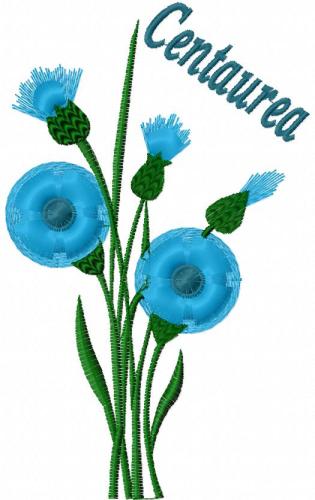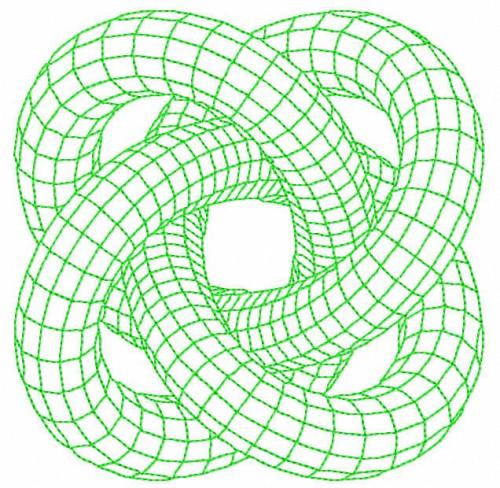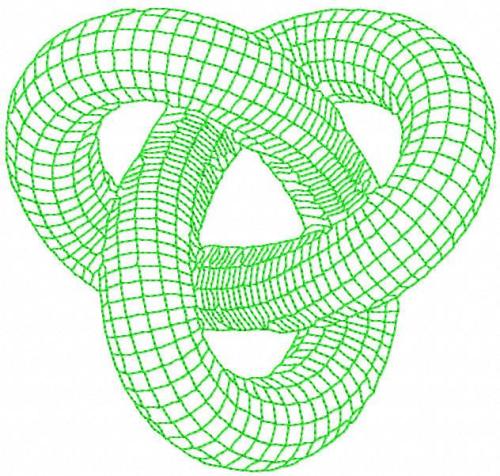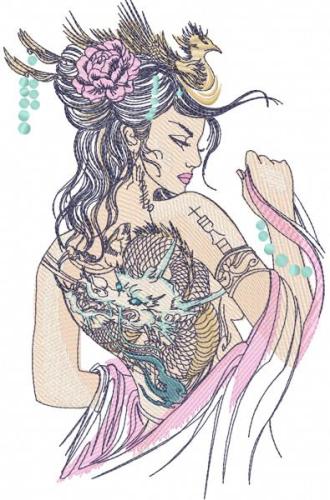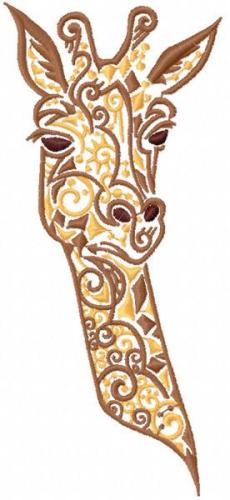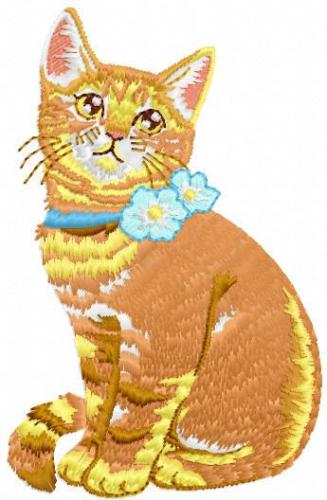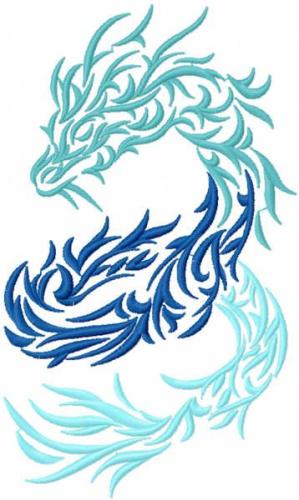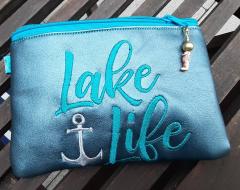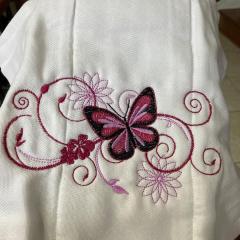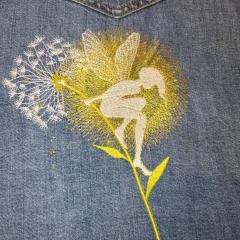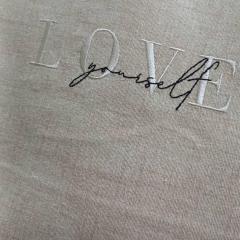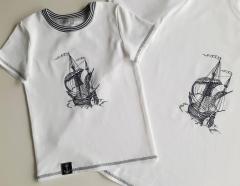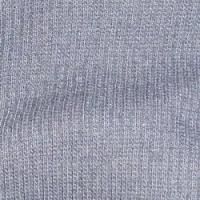
Original text by: Marina Belova
Everybody knows that the needle coming through the fabric must not leave a trace of small pin holes along the perimeter. But such a things happens, especially on knitwear in case the needle has not been chosen properly and because of other reasons, too. Often this defect is not evident right away, because the stitches lie close to each other. But several washes later it becomes apparent to anyone wearing the embroidered item in question.
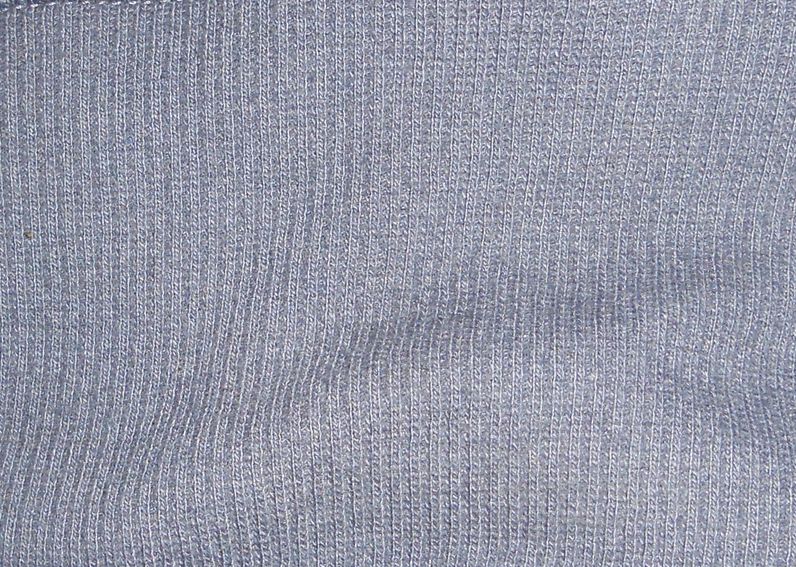
The best way of avoiding such a problem is to look through the fabric at a light bulb when testing the design. The main point here is not to confuse the genuine holes with the stretched loops. Those who are not sure of what exactly they are looking at, may take a magnifying glass to see more clearly.
I, too, was sometimes lost in the thoughts, trying to figure out what was wrong with those holes and why. Now, having looked over the materials on the subject, I came to understand some of the criteria needed for choosing a proper needle. What I am especially interested in are the reasons behind all this. I'll share my knowledge with you.
As you undoubtedly know, knitwear is constructed by the loops of yarn, of which some are bigger and some are smaller. Therefore the most important thing when embroidering is to choose the needle so that its diameter would not in any case outsize the smallest loop. This, among other things, will guarantee that the yarns won't be ruined by the stretch and distortion caused by the needle. Such a small trifle, which, nevertheless, has remained unknown to me.
The second thing that will guarantee that the loops will remain intact during the embroidery is the properly chosen needlepoint. I've already mentioned in my blog post that you need a ballpoint for embroidery on knitwear. It is necessary for the needle not to pierce the yarns, but to move them apart, so the loop would glide along the side of the ballpoint. Preparing to work on thin knitwear you should change your needle for the one with a light ball point (SES) at least. Moreover, you should change the needle more often when embroidering on knitwear than on woven textiles. You should not wait until the needles are damaged so much that they will ruin the fabric.
A curious detail is that the needle is not always the reason for pin holes The reason for their appearance may be the knitwear being too dry. When the knitwear is dry, it loses its ability to stretch and be flexible, and becomes coarse. This means that it does not matter what needle you use — the yarns will not glide around its ball point, but rather be pierced with it.
One of the oldest existing ways of avoiding that is to store your item in a dark humid place. It is true for the items made of cotton. Or you can sprinkle them with water prior to the embroidery. But here is a possibility of applying too much water — you should not forget that the embroidery machine parts are made of metal, which tends to get rusty. Therefore, you should not sprinkle water close to the equipment or get the fabric thoroughly wet. I've also encountered a clever recommendation to spray the knitwear with silicone used as a lubricant for some parts of the machine. It is also used for oiling the metallic threads so they could slip through the fabric more easily. But before using the spray you should first make sure that it is a 100% silicone — this way it will not leave stains. Silicone, too, shouldn't be used in close proximity to the equipment.
Such are the nuances of working with knitwear. Embroidery design creation as well as embroidery technique is important. An these two go together, not separately.
This text was written by me on the basis of Roy Burton's article in the Wearables magazine.
-
 1
1

